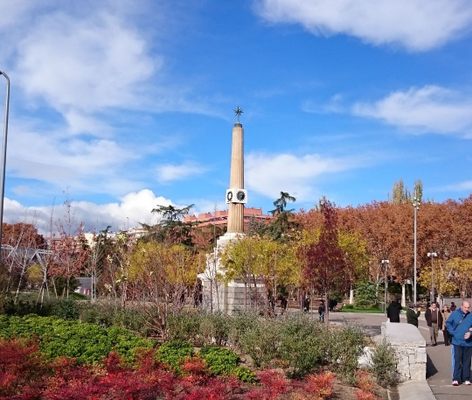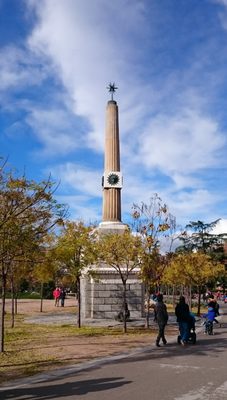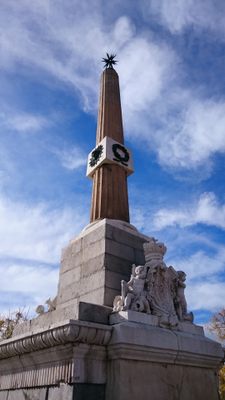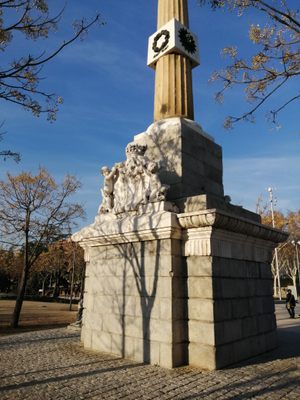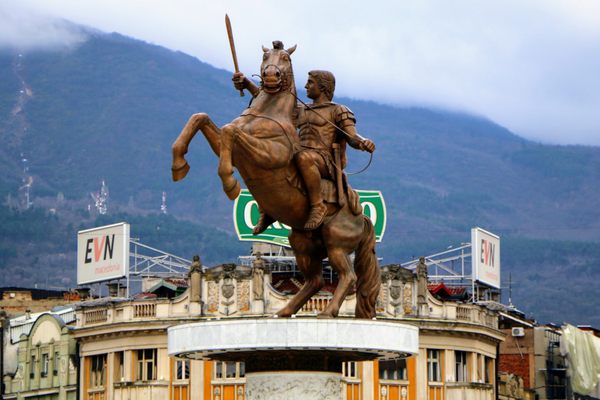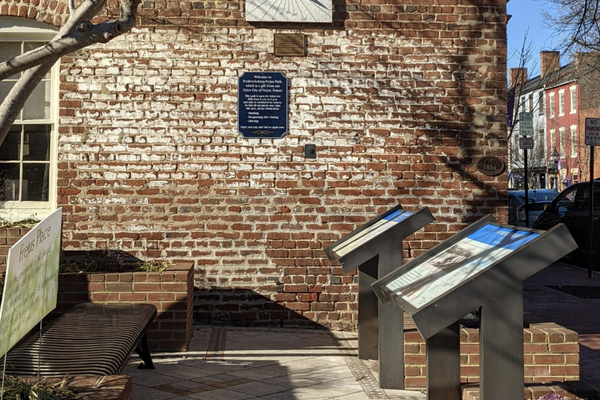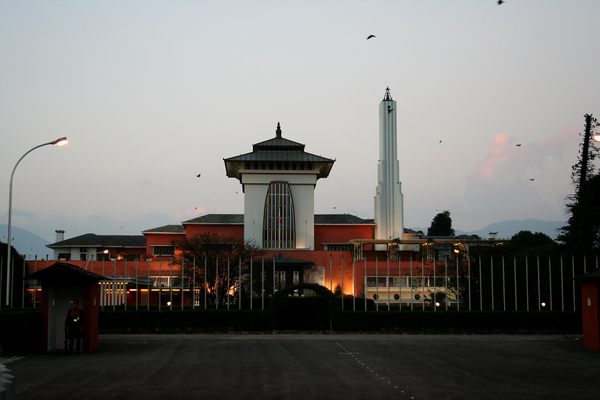About
If you're walking along the newly refurbished Madrid Rio park, you might pass this monument and wonder, "What on earth are a stone column and two bronze sphinxes doing there?!" Well, they aren't really supposed to be there. In fact, almost 200 years ago they were part of a giant fountain made to celebrate the glory of Spain under the future Queen Isabella II. Then it all went a bit wrong.
The Obelisk of Arganzuela (also called the Obelisco de la Castellana) was commissioned to celebrate the birth of a daughter to King Fernando VII. Unfortunately, the king died when little Isabella was just three years old, leaving an unstable regency backed by the military and an angry uncle who wanted to take over. The monument was hastily finished and placed about halfway along the recently opened Paseo de la Castellana, just north of where Plaza de Colon is now. It was part of an ornamental fountain, so for the next thirty years, passers-by could ride past in their carriages and marvel at the site of the sphinxes shooting water out of their mouths, rather than just looking surprised like they do now.
The main attraction of the monument is the 20-meter column made from red granite. It is topped by a bronze polar star, which is said to be a symbol of the hopes placed on the young Queen Isabella and her ability to guide the destiny of Spain. This was very much wishful thinking, as her reign was a bit of a disaster, more on that in a moment.
On the grey granite base, there are two coats of arms carved from white limestone. One is the shield of Isabella herself: the castle and lions representing the Royal House of Castile and Leon. There is also a fleur-de-lys symbol in the middle, as the Spanish royal family was, and still are, Bourbons, descended from the French monarchy before they lost their heads. On the opposite side are the bear and the madroño tree, still used on the coat of arms of Madrid and used to decorate everything from bins to manhole covers.
In 1868, after three decades of infighting, rebellion, and assassination attempts, Queen Isabella was deposed and spent the rest of her life exiled in France. So the monument got ditched too, the fountain was replaced by landscaping and the sphinxes moved to the Retiro Park pond, leaving the stone obelisk part standing high and dry on its own.
Fast forward to 1906, and the city council decided to erect a statue of Emilio Castelar, a 19th-century historian, journalist, and writer, who served as president of Spain’s short-lived First Republic from 1873-74. They decided that the perfect place for an anti-Royalist celebration would be the site where Isabella's column stood, so the remaining obelisk got taken apart and shifted to a quieter part of the city. Now in Plaza Manuel Becerra, it gets reunited with the sphinxes and then largely ignored for a while.
Then in 1969 it all gets moved again, this time due to road works, to its current position along the Manzanares River. Once again part of a large ornamental fountain and pond, this gets changed one more time with the creation of the Madrid Rio Park from 2008 onwards. The fountain and pond disappeared and the column and these two dry sphinxes now stand on the side of a tree-lined path. Without any signage or interpretation, they seem destined to remain a mysterious and forgotten part of Spain's modern political history.
Related Tags
Know Before You Go
The monument doesn't have an exact address. If you walk along the north bank of the river, it's just east of the Arganzuela bridge, the big metal spiral one.
Community Contributors
Added By
Published
March 27, 2023
